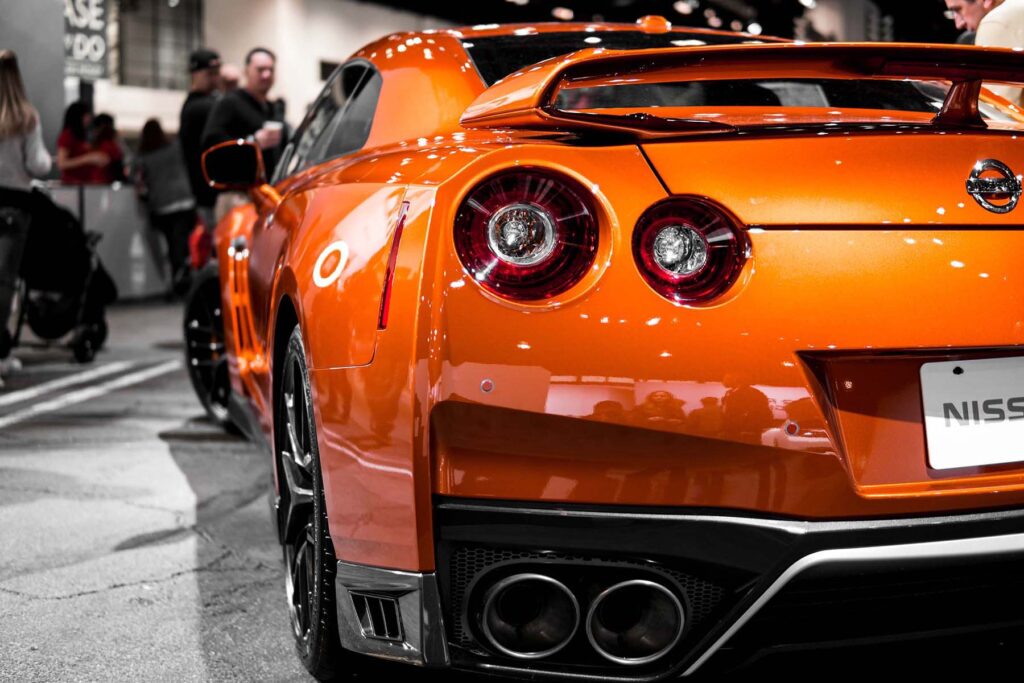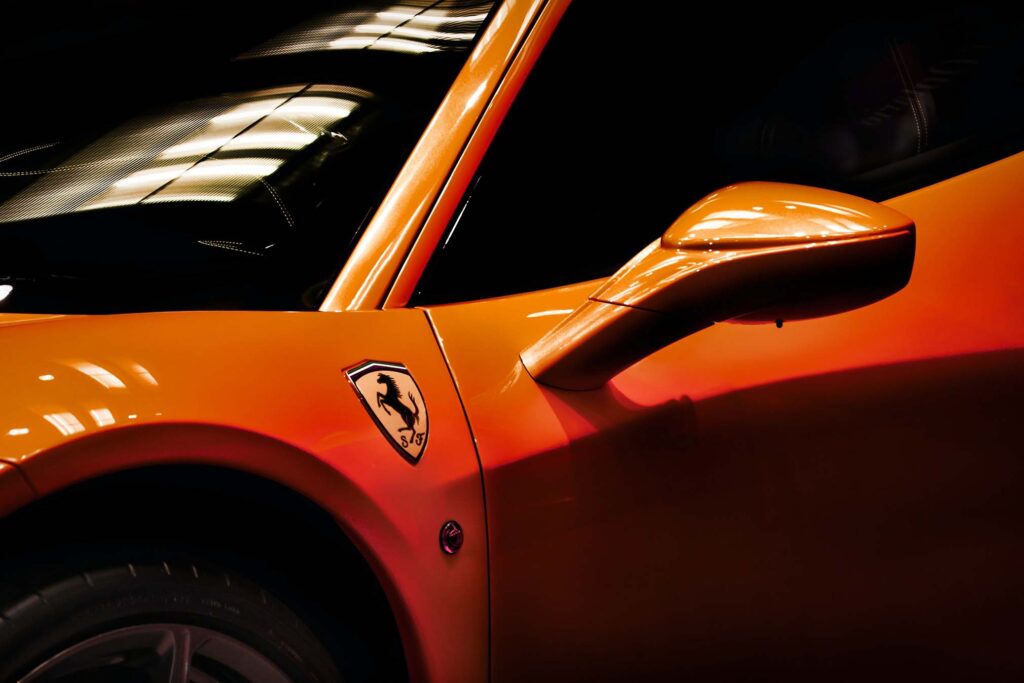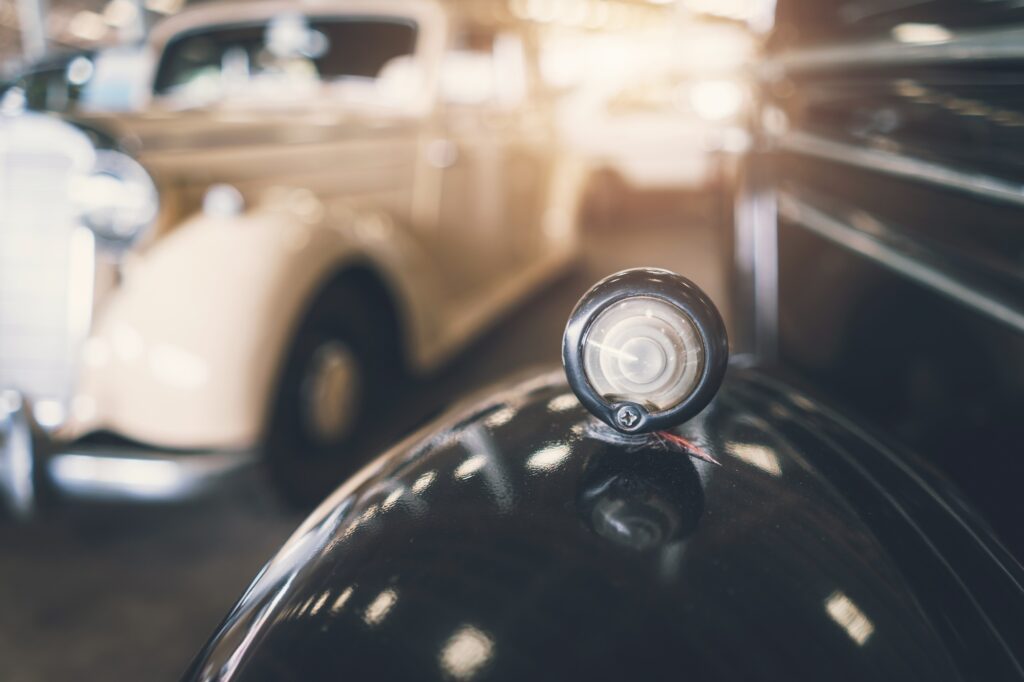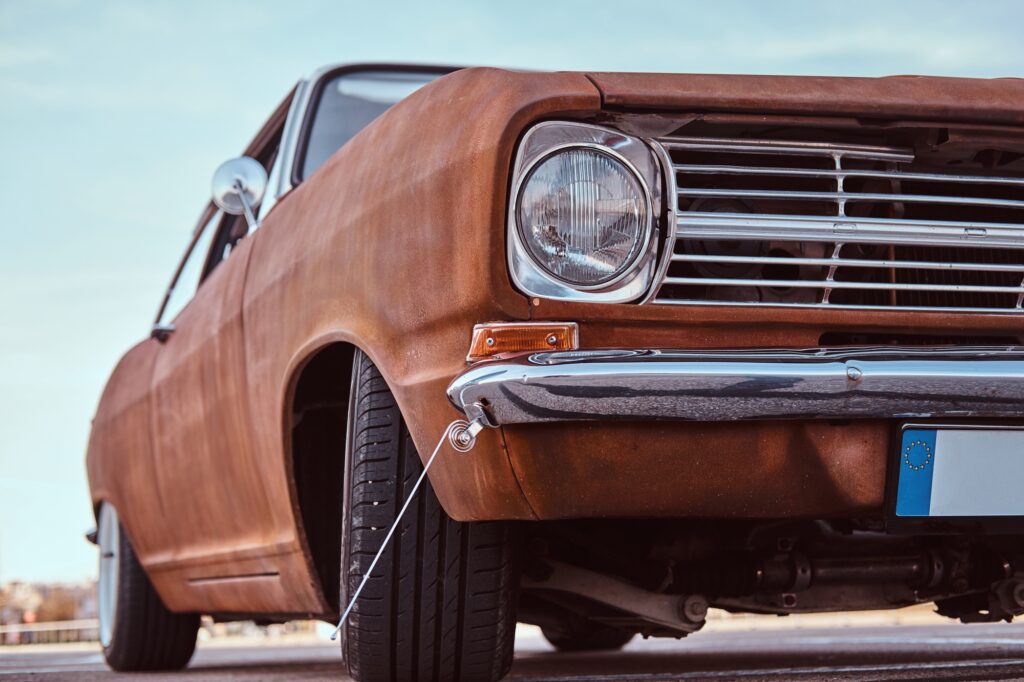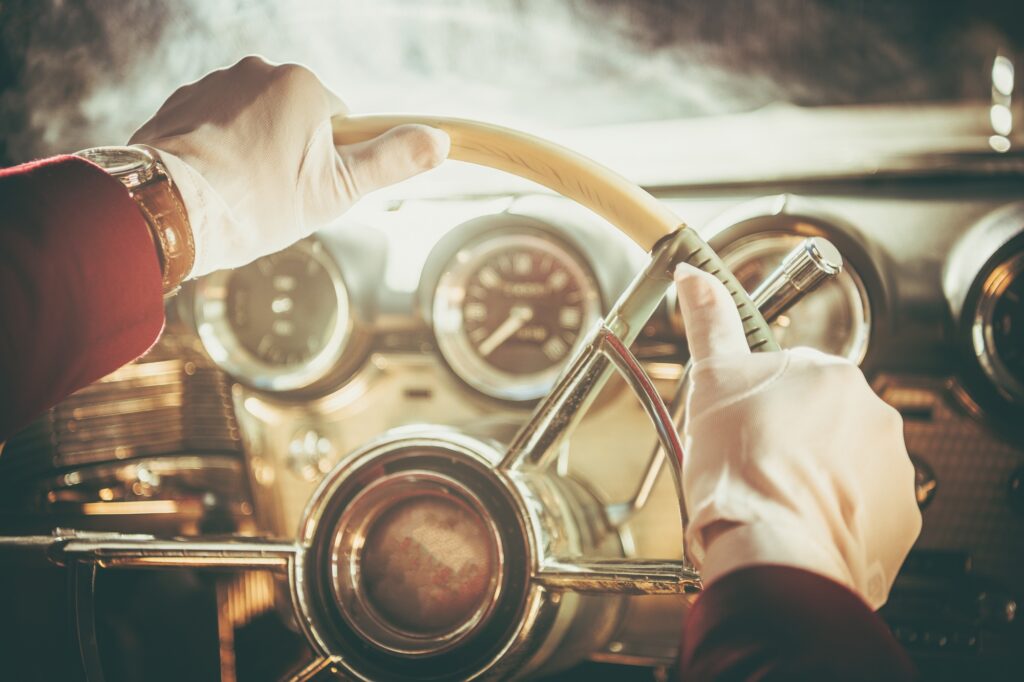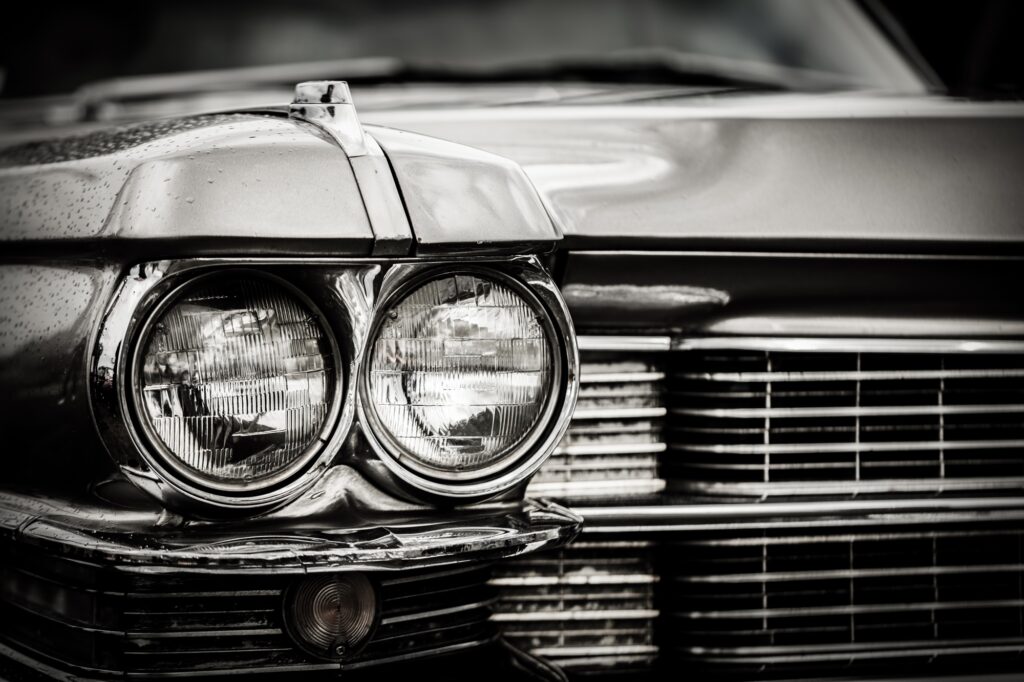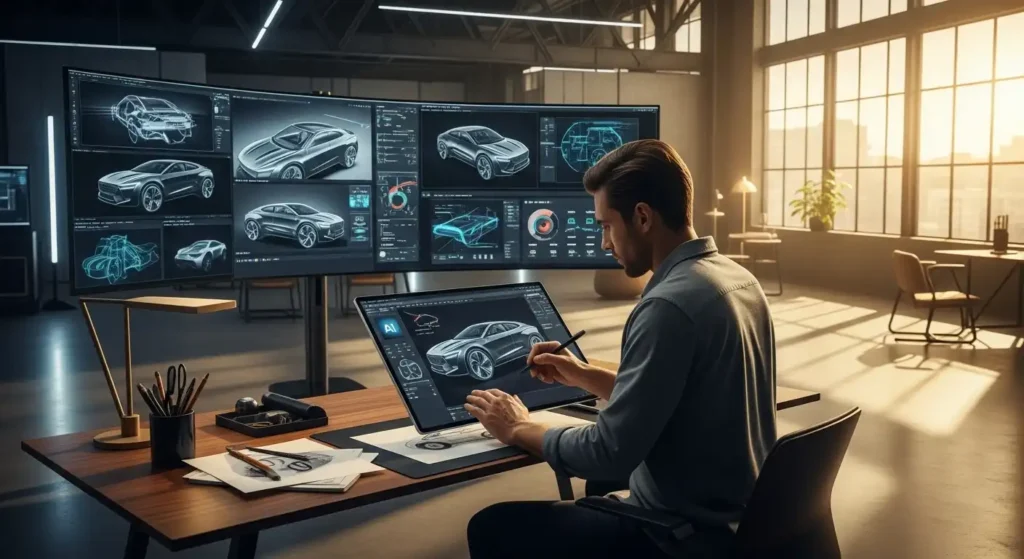Introduction: A New Era in Automotive Creativity
The automotive world thrives on creativity, and 2025 has introduced a new game-changer: AI-assisted automotive concept art.
Designers, hobbyists, and collectors are now blending human artistry with machine learning to create designs faster, more efficiently, and with endless variety.
From futuristic hypercars to reimagined vintage classics, AI tools are helping artists bring visions to life that once stayed only in their imagination.
This movement does not push traditional artistry aside. Instead, it enhances it. AI delivers speed and flexibility, while the human artist provides vision, culture, and emotional depth.
Together, they are reshaping how the automotive community thinks about concept art and personalization. For inspiration on traditional methods that still inspire,
see our article on custom automotive artwork.
Why AI Is Changing Automotive Concept Art
Traditional concept art took weeks or months. Artists started with sketches, refined them with digital tools, and then rendered them into polished designs.
In contrast, AI can now create dozens of detailed variations within minutes. This shift saves time, but it also frees the artist to explore riskier or more experimental designs.
It creates more opportunities to test shapes, textures, and color combinations without wasting hours on ideas that may not work.
The popularity of virtual tuning has also pushed AI into the spotlight.
Car enthusiasts have long enjoyed digitally modifying vehicles with new wheels, body kits, or paint finishes. With AI, this process feels more natural and accessible.
Instead of relying only on Photoshop skills, enthusiasts can now experiment with advanced AI software to preview their dream build before taking it to the shop.
Top AI Tools for Automotive Designers
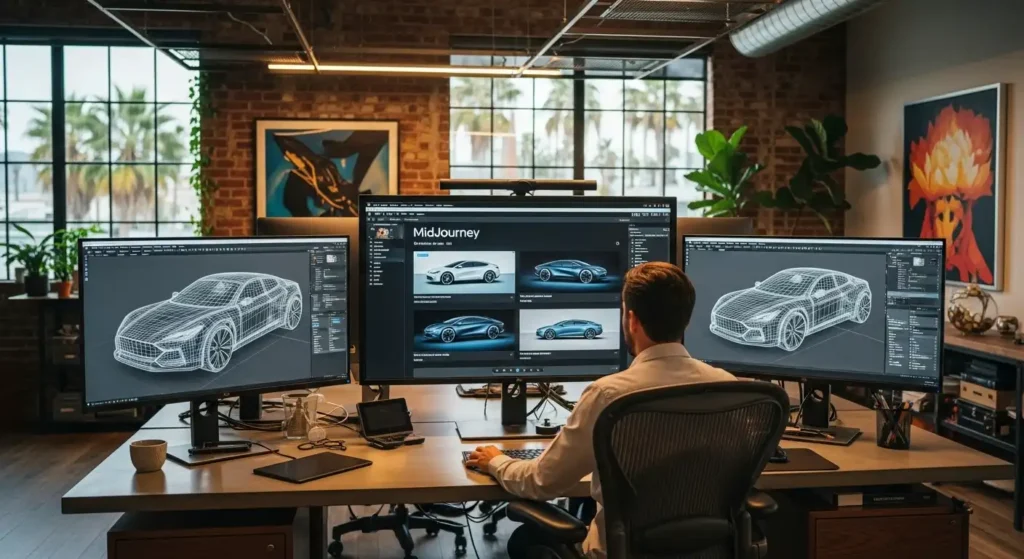
The range of AI platforms available in 2025 continues to expand. Below are some of the most impactful tools shaping automotive design:
- MidJourney & Stable Diffusion: These platforms allow users to describe a vehicle concept in words and instantly generate multiple styled images. Artists often use these as a foundation for further refinement.
- Blender + AI Plugins: Combining 3D modeling with AI rendering tools helps designers create lifelike, production-level images with accurate reflections and lighting.
- Unreal Engine: Paired with AI, this tool allows for interactive car design that looks cinematic and realistic, often used in marketing materials.
- Photoshop Generative Tools: The integration of AI into classic design software enables artists to refine ideas, replace backgrounds, and adjust elements quickly.
- AI Material Simulators: Designers can now test eco-friendly composites, futuristic finishes, and metallic surfaces digitally before real-world application.
These tools make professional-quality art accessible even to hobbyists. A car collector can now visualize a custom paint job before investing in it. A designer can showcase ten variations of the same car to a client in one afternoon.
The speed and flexibility are unlike anything the automotive art community has seen before.
Blending AI With Traditional Skills
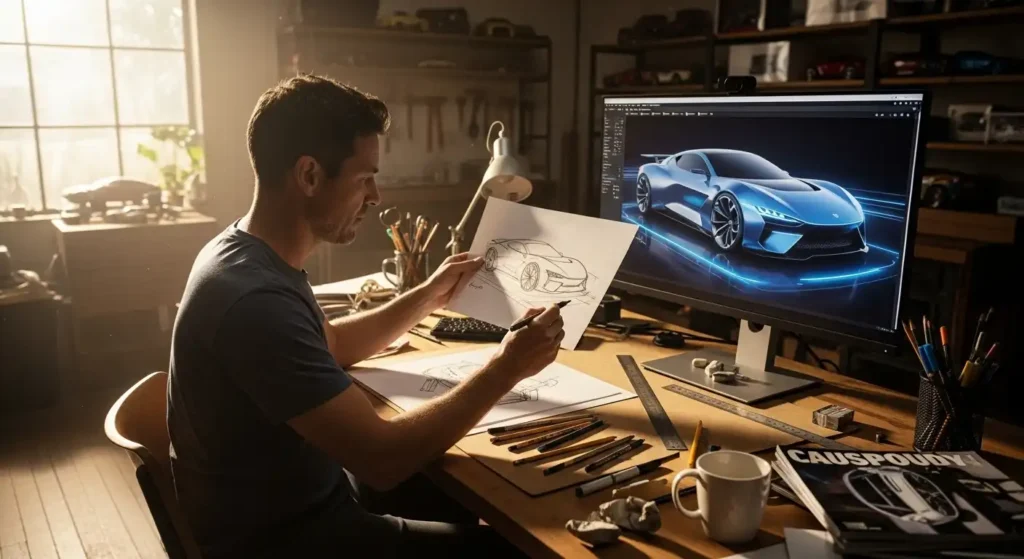
While AI offers speed, the artist provides authenticity. A purely AI-generated image often looks impressive, but it lacks soul. That is why the best results come from hybrid work. Artists combine AI outputs with hand-drawn sketches, digital painting, and real-world design knowledge.
Examples of this collaboration include:
- Overlaying line art on AI images to highlight unique design details.
- Correcting proportions or features that AI misrepresents.
- Adding personal style through lighting, shading, or brush textures.
- Testing feasibility by applying real engineering knowledge to designs.
This approach ensures the artwork is not just visually appealing but also believable. Designers who refine AI art by hand create results that resonate with both enthusiasts and professionals. For techniques that add realism,
see our post on photorealism in car painting.
AI in Car Culture and Lifestyle
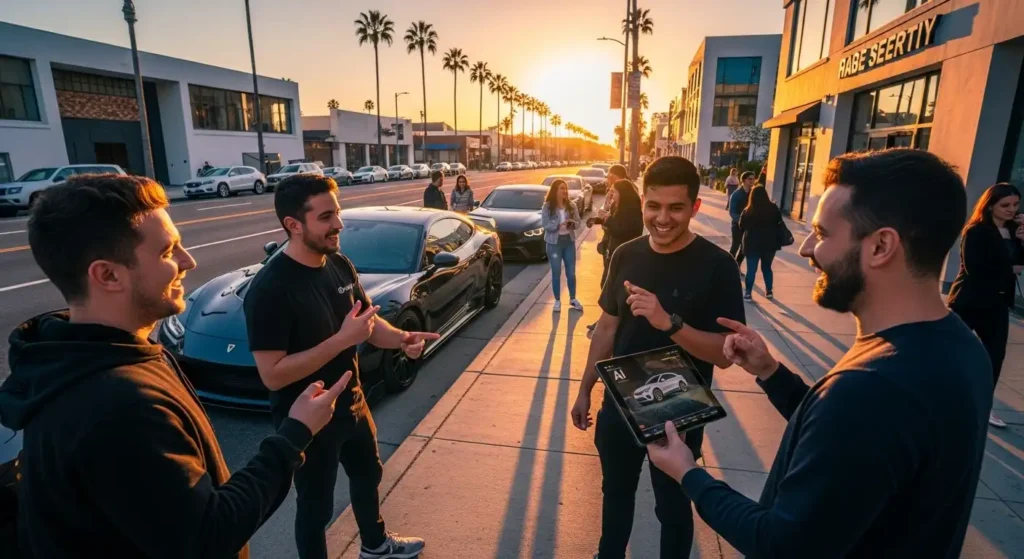
AI-assisted automotive art has become a cultural phenomenon. Car communities on Instagram, TikTok, and Reddit showcase futuristic builds that spark conversations worldwide. Enthusiasts share their AI-generated dream cars,
ranging from cyberpunk-themed Mustangs to electric muscle cars that have not yet reached production. These images inspire discussions about what the future of car design should look like.
Custom shops are beginning to take advantage of this trend. Some now include AI renderings as part of their services. Customers can preview a wrap, paint scheme, or modification package before spending thousands of dollars.
This saves money and ensures greater satisfaction once the real work is complete.
Collectors are also joining the movement. AI-generated prints are being sold as wall art, while limited digital editions are appearing as NFTs. This merging of technology, culture, and art proves that AI is not just a tool — it is a movement reshaping how people engage with car culture.
Industry Adoption and Automotive Design
Automakers are also starting to explore AI-assisted concept art. Some design teams use AI for early brainstorming sessions, where hundreds of variations can be tested before narrowing down to a few feasible options.
This speeds up the design cycle and gives creative teams more room to experiment. AI-generated marketing visuals are also on the rise, helping brands present futuristic ideas at auto shows or online launches.
In addition, AI helps reduce development costs. Instead of building multiple clay models or prototypes, companies can test digital variations in less time. While engineers still need to confirm functionality, AI reduces the initial workload and inspires new approaches to design challenges.
Ethics and Challenges
AI brings challenges, too. Copyright issues remain a concern since many AI systems train on existing artworks. Artists must remain aware of how their designs are created and take steps to add originality.
One of the best ways to address this is by combining AI results with personal sketches or modifications, ensuring the final product is distinct.
Practicality also matters. AI can produce striking visuals, but not every design can exist in the real world. A concept may look futuristic but fail in terms of aerodynamics or safety. Designers must act as gatekeepers, choosing what ideas make sense in reality.
The Future of AI in Automotive Art
The role of AI in automotive concept design will only grow. Expect more integration with design software, greater use in marketing campaigns, and a stronger presence in customization culture.
AI will make it easier for enthusiasts to visualize their dream cars, while professionals will rely on it for faster development cycles.
Still, human creativity remains the foundation. Storytelling, emotional resonance, and cultural influence are qualities only people can provide. AI is a tool, not a replacement. Artists who adapt to this shift will have more opportunities to innovate and reach new audiences.
For more on related trends, read our feature on modern automotive art and wrap design, which explores how AI designs are already influencing customization and style.
Conclusion
The rise of AI-assisted automotive concept art marks a turning point in both art and car culture. It gives artists new ways to create, collectors new forms of memorabilia, and enthusiasts new methods of personal expression.
What once took weeks can now be achieved in hours, without losing the creativity that makes automotive design so inspiring.
AI empowers designers to imagine bold new possibilities while still honoring tradition. Those who embrace the technology while maintaining their unique voice will define the next generation of automotive artistry.
The future is not man versus machine — it is man and machine creating together.

